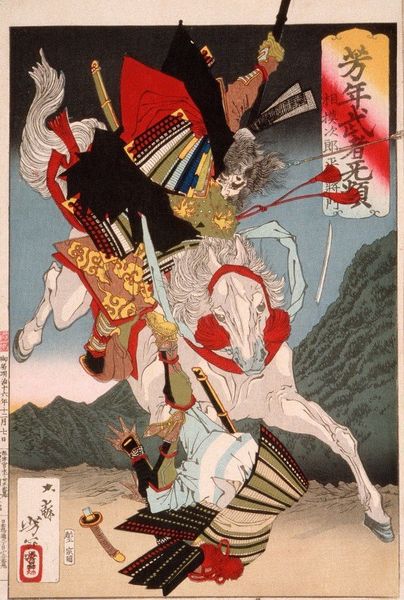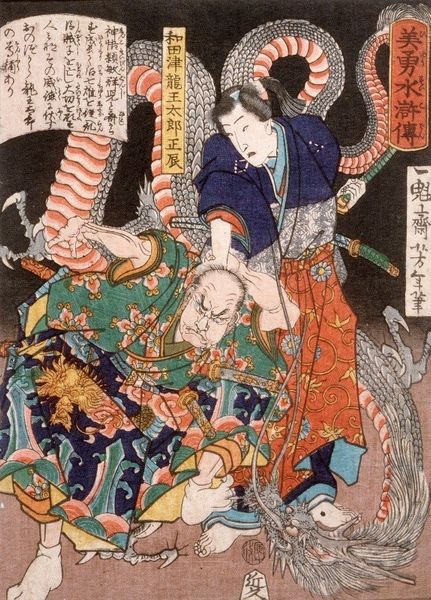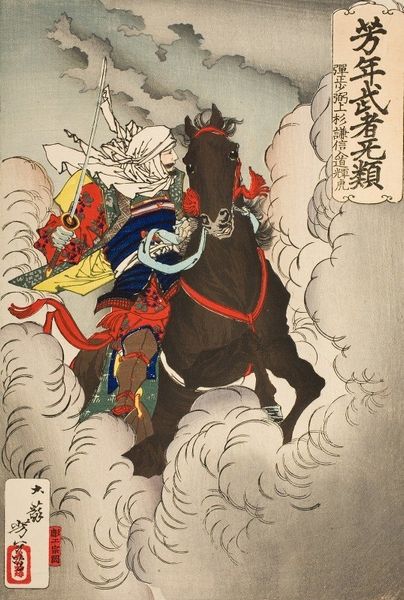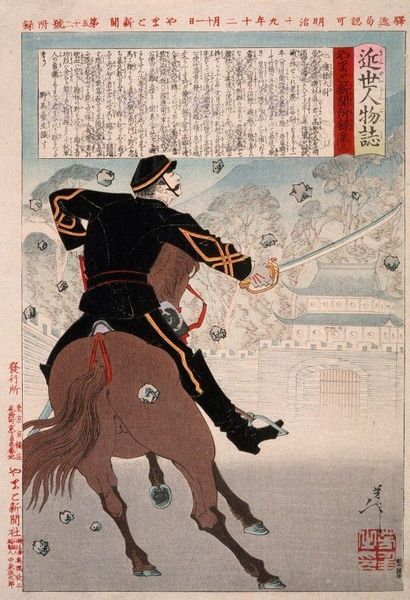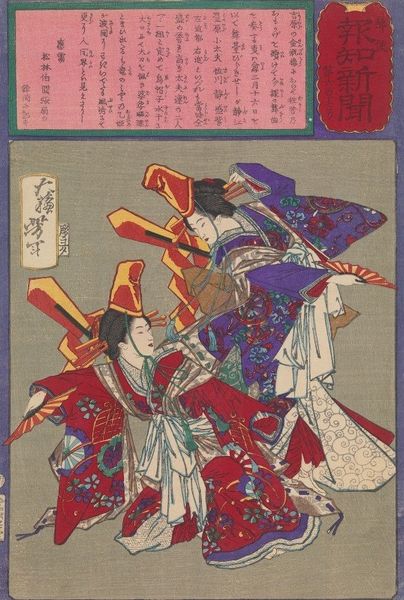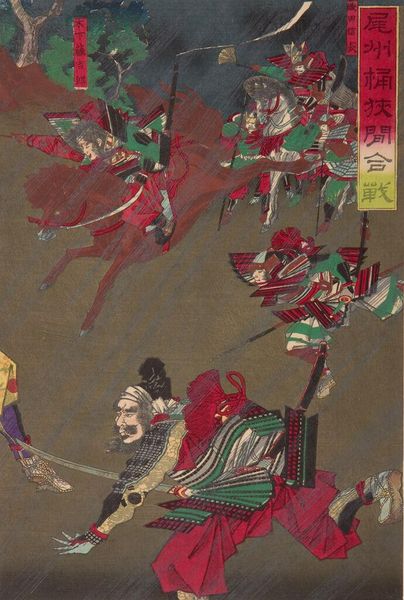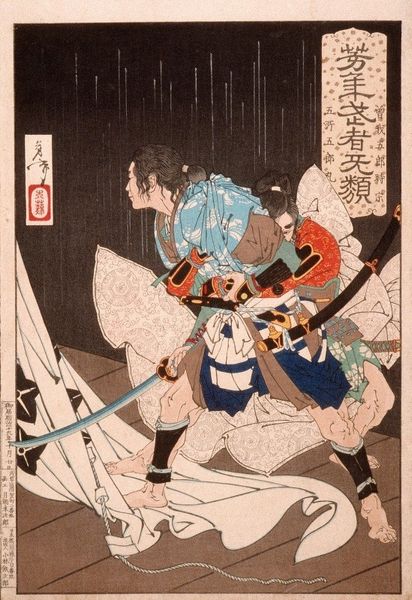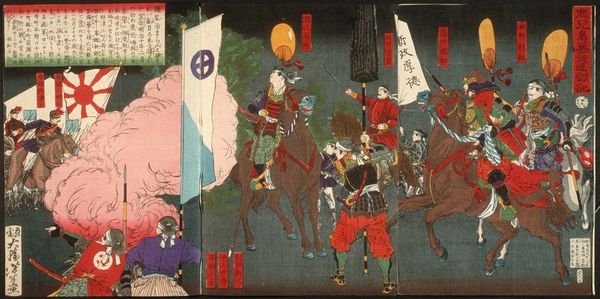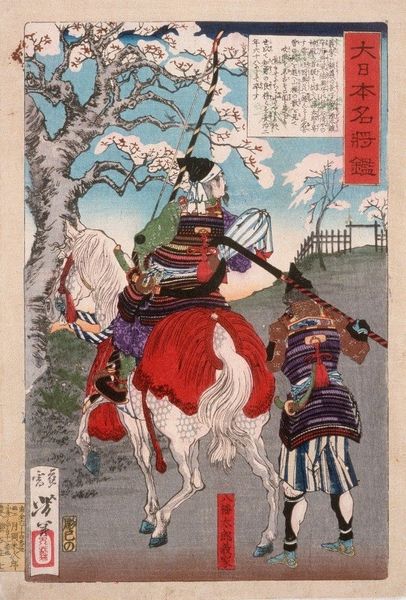
Copyright: Public Domain: Artvee
Editor: Here we have Tsukioka Yoshitoshi's "Sakanoue Tamuramaro in Rain of Arrows" from 1876, a woodblock print. The central figure on horseback, bravely facing a storm of arrows, creates such a dramatic scene! How would you interpret the cultural significance of this work? Curator: It's fascinating how Yoshitoshi positions Sakanoue Tamuramaro, a legendary general, within the context of late 19th-century Japan. Consider the socio-political atmosphere. The Meiji Restoration was in full swing, and there was a real push to define and promote a unified national identity. Woodblock prints, with their mass appeal, became vehicles for popularizing national heroes and historical narratives. How do you think the choice of depicting a military figure like Tamuramaro contributed to that project? Editor: It seems like celebrating a military figure could definitely reinforce the idea of a strong, unified Japan, especially during a time of modernization and potential Western influence. Was there also perhaps a way this image speaks to older Japanese military traditions? Curator: Absolutely! Yoshitoshi, while embracing modern print techniques, also looked back to traditional artistic styles and historical themes. Tamuramaro represented a glorified, somewhat mythical past of imperial conquest and power. Placing this idealized figure within a chaotic battlefield reflects not only military prowess, but also speaks to the anxieties and aspirations of a nation undergoing immense transformation. To what extent do you think these images can shape public memory? Editor: I see how it constructs a particular memory, focusing on strength and maybe even romanticizing conflict to forge a stronger sense of collective identity. It’s interesting how the past is selectively represented to serve the present. Curator: Exactly. The print isn’t simply a depiction of a historical event; it's an active participant in constructing a national narrative, influencing how the public perceives its own history and identity. Examining this print gives us a powerful lesson on how visual culture and politics intertwine. Editor: I learned so much. It’s more than just a battle scene. It's about constructing identity and navigating historical narratives in a changing world.
Comments
No comments
Be the first to comment and join the conversation on the ultimate creative platform.

